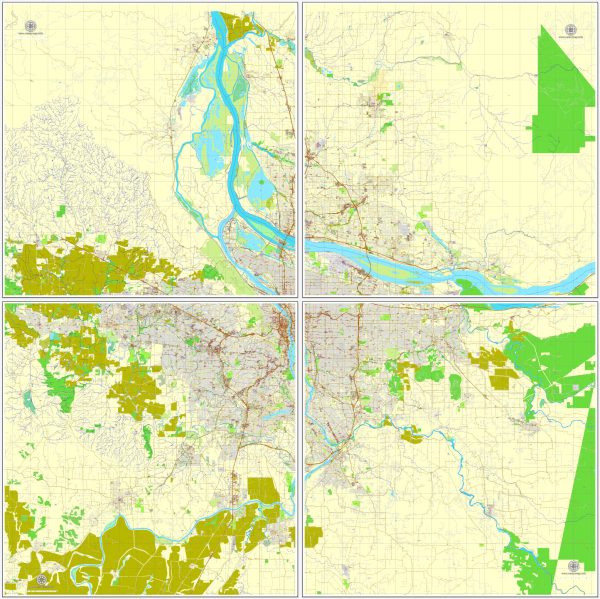The Portland, Oregon, and Vancouver, Washington area is an important hub for maritime industry and transportation in the United States. Located at the confluence of the Columbia and Willamette Rivers, this region plays a significant role in facilitating the movement of goods and people, both domestically and internationally. Here’s a description of the maritime industry and transportation in this region:
- Port Facilities: The Port of Portland, which includes the terminals in both Oregon and Washington, is a key driver of the maritime industry in the area. The facilities include multiple marine terminals equipped to handle a wide range of cargo, from containers to bulk commodities, as well as breakbulk and project cargo. The Port of Vancouver USA in Washington is also a critical player in the region’s maritime industry, specializing in bulk and project cargoes.
- Cargo Handling: The port facilities in the region are equipped with modern container terminals, bulk handling infrastructure, and specialized facilities for various cargo types. These facilities handle a diverse range of commodities, including agricultural products, forest products, minerals, and manufactured goods.
- River Transportation: The Columbia and Willamette Rivers serve as natural transportation corridors, enabling the efficient movement of goods by barge and ship. Barge transportation is a cost-effective and environmentally friendly mode of moving bulk and containerized cargo to and from the ports.
- International Trade: The ports in the region facilitate international trade by connecting to global shipping routes. They have well-established trade relationships with countries across the Pacific Rim, making them crucial gateways for imports and exports. Trade partnerships with Asian markets, such as Japan, China, and South Korea, are of particular significance.
- Rail and Road Connectivity: The region boasts excellent connectivity to the U.S. interstate highway system, with major roadways like Interstate 5 and Interstate 84 facilitating the movement of goods from the ports to inland destinations. Additionally, the rail network, including Union Pacific and BNSF Railway, plays a pivotal role in transporting cargo between the ports and the interior of the United States.
- Employment and Economic Impact: The maritime industry in the Portland-Vancouver region is a significant source of employment and contributes substantially to the local and regional economy. It provides jobs not only in the ports themselves but also in related industries, such as logistics, transportation, and manufacturing.
- Sustainability and Environmental Concerns: The region places a strong emphasis on sustainability and environmental responsibility. Efforts are made to reduce the carbon footprint of transportation by promoting cleaner technologies and reducing emissions. Additionally, conservation of the rivers’ ecosystems is an important consideration.
- Infrastructure Development: Investments in infrastructure are ongoing to enhance the capacity and efficiency of the ports and transportation networks. Modernization projects, such as the expansion and improvement of terminal facilities, are aimed at ensuring the continued growth and competitiveness of the region’s maritime industry.
In summary, the Portland, Oregon, and Vancouver, Washington area plays a crucial role in the maritime industry and transportation sector of the United States. With its well-equipped port facilities, strategic location, and commitment to sustainability, the region is an important gateway for the movement of goods and an economic driver for the local and regional economies.


 Author: Kirill Shrayber, Ph.D.
Author: Kirill Shrayber, Ph.D.